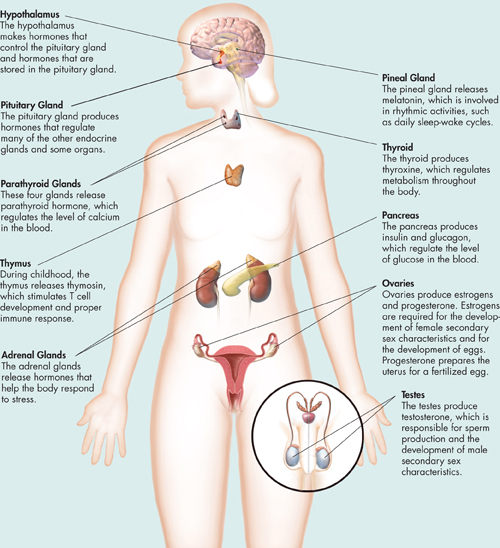Glands A gland is an organ that produces and releases a substance, or secretion. Exocrine glands release their secretions through tube-like structures (called ducts) either out of the body or directly into the digestive system. Exocrine glands include those that release sweat, tears, and digestive enzymes. Endocrine glands usually release their secretions (hormones) directly into the blood, which transports the secretions throughout the body. Figure 34–1 shows the location of the major endocrine glands. Although not usually considered as endocrine glands, other body structures such as bones, fat tissue, the heart, and the small intestine also produce and release hormones.
MYSTERY CLUE

Fat tissue may send signals to the hypothalamus when fat reserves are low. Lisa's body fat percentage dropped from 17 percent to 9 percent. Could this have affected such signals?
 In Your Notebook Make a three-column table. Label the columns Gland, Hormone(s), and Function. Fill in the table as you read.
In Your Notebook Make a three-column table. Label the columns Gland, Hormone(s), and Function. Fill in the table as you read.

FIGURE 34–1 Major Endocrine Glands Endocrine glands produce hormones that affect many parts of the body. Interpret Graphics What is the function of the pituitary gland?
dTable of Contents
- Formulas and Equations
- Applying Formulas and Equations
- Mean, Median, and Mode
- Estimation
- Using Measurements in Calculations
- Effects of Measurement Errors
- Accuracy
- Precision
- Comparing Accuracy and Precision
- Significant Figures
- Calculating With Significant Figures
- Scientific Notation
- Calculating With Scientific Notation
- Dimensional Analysis
- Applying Dimensional Analysis




